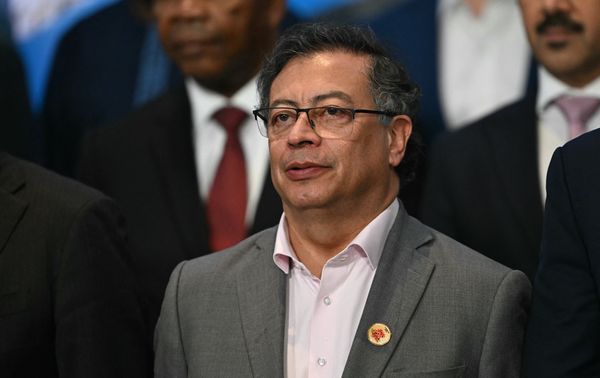
With more than 35 years of experience working in sectors focused on extracting valuable materials from the ground, I have always been on the lookout for the next big thing. I like to think we are after the “future metals,” the ones that are going to power our global economy and help make our world a cleaner and greener place. Several years ago, I came into contact with elements that have the potential to redefine the geopolitical landscape: rare earth elements.
President-elect Donald Trump has his eye (again) on buying Greenland, which also happens to possess one of the world’s largest known rare earth deposits.
Coincidence? I think not. Of course, there may be more to the story, and I have no direct access to Trump or his inner circle, but I do have the perspective of a mining CEO—I lead Critical Metals Corp.—which in this case matters.
Chinese bans and a Trump visit
Today, we can’t talk about rare earth elements without talking about China, the world’s dominant producer of rare earths, controlling more than 90% of the market. Last month China announced a ban on the export of certain rare earth minerals and metals to the United States. China banned shipments of gallium (essential for the production of computer chips and defense applications), germanium, antimony, and other materials that have both military and civilian uses.
This is amidst a significant amount of buzz about Trump and his interest in buying Greenland, which Donald Trump Jr. recently visited. I believe this is in part due to the Tanbreez Project, a foundational rare earth asset located in Greenland with more than 4.8 billion tons of potential material. This is among the largest rare-earths assets in the world; one of the highest concentrations of gallium was discovered there this past fall.
And now a necessary disclaimer: My company, founded last year through a merger, is focused on critical metals and minerals, and acquired a controlling interest in Tanbreez last summer. That also means I’m well familiar with Greenland’s underground riches.
The Mighty 17, and why they matter
Although the roots of rare earth elements (“rare earths”)—a group of 17 elements on the periodic table, which I sometimes fondly refer to as the “mighty 17”—can be traced back to their discovery in the 18th century, they remain widely misunderstood. Despite their namesake, they are actually quite common in occurrence. However, due to their typically low concentration in many ores and rapid oxidation, they can be extremely difficult to extract. They are broken up into two broader categories: light rare earth elements and heavy rare earth elements—and for refining capacity, the latter is limited.
Importantly, these elements are key enablers for next-generation technologies. They contribute to lower emissions, reduced energy consumption, and enhanced overall energy efficiency, performance, and safety. They are also essential for making products lighter and smaller.
Bolstering national security in the West
At the end of the day, I think, Trump believes in the importance of rare earth elements because they are crucial to the U.S. defense industry and the country’s national security as a whole. This is because the U.S. defense industry is in dire need of rare earths.
Light rare earth elements are primarily used in the manufacturing of magnets, which are used in electric vehicle motors, medical equipment, wind turbines, and data storage systems. These are the applications that have made many of the headlines. However, the more limited heavy rare earth elements are critical for heavy weaponry and, in turn, national defense.
The heavy rare earth elements are key components for a range of defense applications, including advanced military systems like the F-35 Lightning II aircraft, unmanned aerial vehicles, and Virginia and Columbia class submarines.
As such, the Defense Department has been increasing its focus on domestic supply chains to ensure continued access to the rare earth materials needed to manufacture critical weapons systems.
With the Pentagon planning a substantial increase in F-35 procurement in the coming decades, ensuring a reliable supply of heavy rare earth elements will be crucial. For reference, Tanbreez in Greenland has a particularly high concentration of heavy rare elements.
The U.S. remains strong and powerful. However, future battles may be won or lost based not on our current strength, but rather on access to—and utilization of—the Mighty 17.
Read more:
- Critical minerals processing will be the equivalent of 19th-century oil refineries—at a Rockefeller moment
- Mining hasn’t evolved in decades. The U.S. must reinvent it as China tightens its grip on critical minerals
- Donald Trump Jr. visits Greenland just days after the U.S. president-elect announced Washington should take over territory
- How America can fast-track critical metals production—and disrupt China’s leverage
The opinions expressed in Fortune.com commentary pieces are solely the views of their authors and do not necessarily reflect the opinions and beliefs of Fortune.







